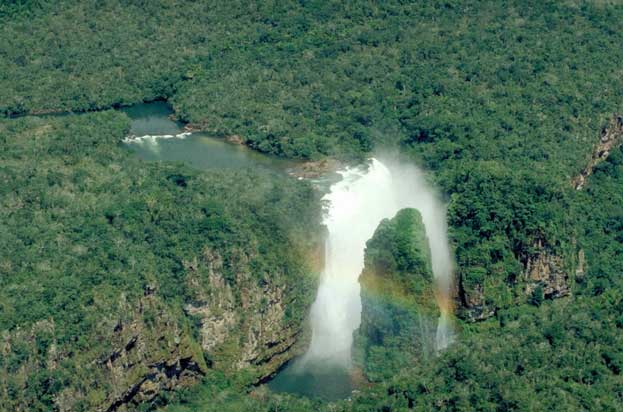The Kempff Mercado National Park is one of the largest (1,523,000 ha) and most intact parks in the Amazon Basin. With an altitudinal range of 200 m to about 1,000 m, it contains a rich mosaic of habitat types from cerrado savannah and forest to upland evergreen Amazonian forests. The park boasts an evolutionary history dating back over a billion years to the Precambrian. Located on the border with Brazil, the site includes a large section of the Huanchaca Plateau and surrounding lowlands. There are rugged cliffs in the northern, western and southern sides of the plateau, with several valleys and steep slopes in its eastern side. Several rivers have their sources on the plateau and form spectacular waterfalls. The largest river in the area is the Iténez, which marks the border with Brazil, to the north of the park, and the Paraguá River dominates the lowlands to the west.

Continent: South America
Country: Bolivia
Category: Natural
Criterion: (IX)(X)
Date of Inscription: 2000
Kempff Mercado Biogeographic Kingdom
The north-eastern sector of the Santa Cruz Department is part of a transition zone where Amazon forest intergrades with the dry forest and savannah habitats of the Cerrado biogeographic realm. Habitat types of the region can be grouped into five basic units that represent distinct ecosystems: upland evergreen forest; deciduous forest; upland Cerrado savannah; savannah wetlands; and forest wetlands. The humid forests of the park are floristically distinct from the moist forests of western Amazon and the Andean piedmont. These forests are classified in several habitat types still scarcely studied.An evergreen forest with tall trees is found on deep and well-drained soils, while there is a dwarf forest formation occupying a transition zone with the Cerrado. A peculiar feature of the forest is the lianas, which form a low and very thick canopy. Although trees are also part of the canopy, the lianas proliferate in such a way that they dominate. The Huanchaca Plateau has a rich Cerrado flora that incorporates many species that were thought to have a distribution restricted to central Brazil.










No comments:
Post a Comment